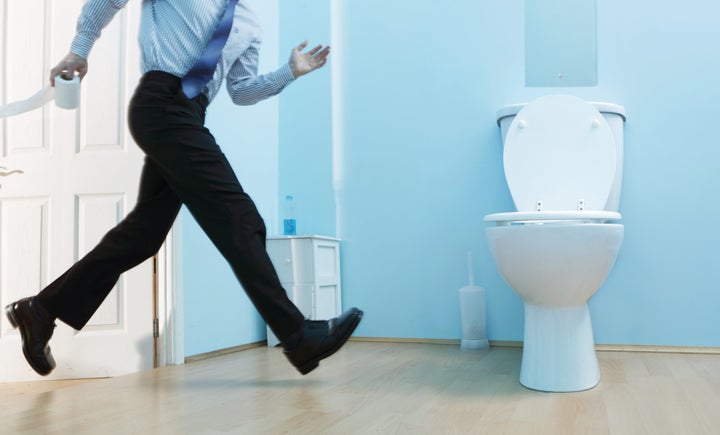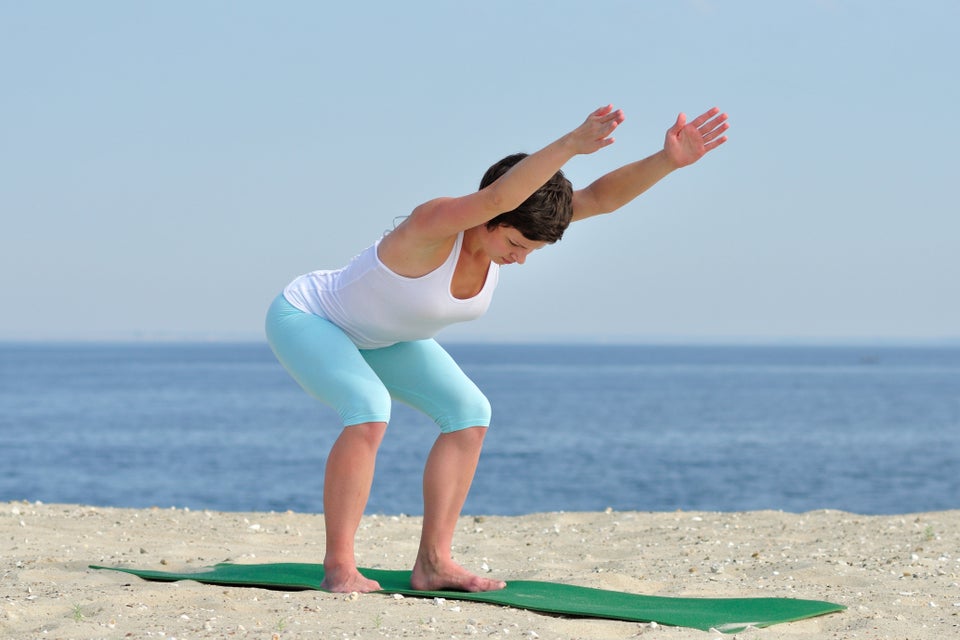
Do you often feel the urge to pee and feel like you just can't hold it? Do you head to the bathroom far more than you think is normal? You may have overactive bladder (OAB), a condition that affects about 33 million Americans. With OAB, people experience sudden urges to urinate that they can't control, as well as the need to urinate frequently. People with OAB may also leak when they experience the urge to urinate.
Who Gets OAB?
According to the American Urological Association, up to 30 percent of men and 40 percent of women in the U.S. experience OAB symptoms. Women who have gone through menopause and men who have had prostate problems have a greater risk for OAB. And risk increases with age. In addition, some medications may cause or worsen urinary symptoms. These include blood pressure drugs—diuretics and a class called alpha blockers (Cardura, Minipress)—antidepressants and sleeping medications.
Doctors diagnose OAB based on a physical exam, symptoms of frequency and urgency, and other test results. Urinary frequency is defined as urinating at least eight times in a 24-hour period. You may also wake up to urinate two or three times a night. In about 40 percent of patients, OAB resolves on its own within a year, but most people suffer from symptoms for years.
Luckily there is much you can do to alleviate symptoms and overcome overactive bladder.
OAB Treatments
Lifestyle changes are a first step in overcoming overactive bladder. “What you eat, how you exercise, and how well you take care of yourself all factor in your overall bladder health and your success at alleviating overactive bladder symptoms,” says Karen Sebastian, M.S.P.T., a physical therapist in Honolulu, HI, who specializes in bladder control issues. Here, a primer on lifestyle practices that can help:
1. Change your diet
What you eat and don’t eat can affect your symptoms.
Reduce:
- Diuretics, such as alcohol and caffeine, which stimulate muscles in the bladder, increasing urgency. Limit caffeine to 100 mg a day (about half a cup of coffee).
- Irritants, including acidic fruits and juices, carbonated beverages, spicy foods and artificial sweeteners like saccharine and aspartame
Eat more:
- Fiber. “Because the bladder and rectum are in close proximity, being constipated puts constant pressure on the bladder,” says Sebastian. In fact women with OAB have higher rates of constipation than those without the condition. Load up on fruits, vegetables and whole grains.
2. Exercise
While Kegels are the best exercise for urinary health (See how to do them below), having a strong back and core are also important. “We’re finding more and more in research that our muscles work together in groups,” says Sebastian. “Your abs and adductors—hip muscles—attach directly to the pubic bone. And muscle fibers in the hip feed into the pelvic floor. They all help each other activate.” To ease bladder symptoms, try three moves once a day, while lying down on your back:
- Inner thigh squeeze. With your knees bent and feet on the floor, place a pillow between your knees and lightly squeeze to work your adductors. Inhale, and as you exhale, clench your stomach muscles to tilt your pelvis up, while keeping your tailbone on the floor. (It should feel like you're pulling your pelvis towards your belly button.) Hold for 10 seconds while breathing normally. Relax completely. Repeat 10 times.
- Hip flexors. Position yourself as you did for the "inner thigh squeeze" exercise, but without the pillow. Inhale, and as you exhale, clench your stomach muscles to tilt your pelvis up, while keeping your tailbone on the floor. Then lift up your hips to create a “bridge,” and slowly open and close your knees 10 times. Lower your hips and relax completely. Repeat 2 or 3 times for a total of 20 to 30 hip rotations.
3. Meditate
Some women find their bladder symptoms are eased when they tap into the mind-body connection. Women who listened to a 15-minute audio recording using deep breathing and visualization exercises twice a day for two weeks cut the average number of their urge incontinence episodes from 42 to 16 per week, Loyola University researchers have reported. The women also boosted their continuous “dry time” from 32 to 100 hours per week.
Try this deep-breathing exercise:
Lie down and get comfortable. Allow yourself 10 undisturbed minutes. Take a few slow, deep breaths, allowing your belly to rise and fall. With each exhale let your muscles go, allowing yourself to “melt” into your supporting surface.
Concentrate on your breath. Inhale to a silent count of 3, allowing your stomach to rise, hold for a second at the top of your inhale, then slowly exhale to a silent count of 3. Repeat this pattern five times. Next, continue breathing slowly and deeply, but now to a count of 4. Progress to a count of 5, then 6.
Re-focus on your surroundings. Slowly bring your attention back to the here and now.
4. Do Kegel Exercises
Your pelvic floor muscles support your urethra and bladder, so keeping them strong is crucial to preventing leaks. Research shows that Kegel exercises, which involve contracting and releasing the pelvic floor muscles, can be very helpful. “Kegels are a good starting point for anyone with a bladder problem,” says Lauri Romanzi, MD, a uro-gynecologist in New York City. Try this Kegel routine recommended by the American Urogynecologic Society (AUS), three times a day:
- Start by pulling in and holding a pelvic muscle squeeze (as if you were trying to stop yourself from urinating) for 3 seconds then relax for an equal amount of time (3 seconds). Do this for 10 repetitions.
- Increase your contraction hold by 1 second each week until you are contracting for a 10-second squeeze.
- Remember to rest and breathe between contractions.
- When you start, do the exercises while lying down. As you get stronger; do an exercise set sitting and standing.
If self-help tactics aren’t enough to get symptoms under control, your doctor may suggest bladder training, which involves scheduling times for urinating instead of waiting for the urge, for instance, and other behavioral measures. A medication that relaxes the bladder may also be prescribed. Together these measures often improve the problem—and your quality of life.
Read more from Grandparents.com:
Also on HuffPost:

